This section is devoted to the collectors and their collections – aimed at William Sugg products or connections – but also open to related items which are historically interesting and/or important. Many collectors hold products sourced from a wide range of manufacturers and sometimes this will help us all to understand the development of a particular product. Books literature and general publications have been separated into their own section under ‘Publications’ and are frequently a resource for many of the product sections. Specific museum collections are listed in the ‘Contacts’ section.
Unfortunately, like the rest of us, collectors have only one lifetime! A common problem, therefore, for all ‘private’ collectors is what, eventually, to do with the collection! It is such a personal enthusiasm that even many of the closest family members would not know what to do with the collection if they were to be left with it – and the horror of the skip looms large. Some of the private collectors in this section hold nationally or internationally important collections which are not likely to be bettered by any world class museum. I would like to propose that any collector who wishes to review his options can provide a contact point through this website to allow any private person or public body to consider some, part or all, of their collection for purchase, exchange, gift or even promotion to a more significant status, to ensure that often a lifetime’s diligent collection never goes to waste.
A new category of gas lighting enthusiast prepared to ‘invent’ their own exterior gas lamp has been included in July 2015. Whilst Martin Lawrence would rather I called him ‘Alternative’ I think just plain ‘Enthusiast’ covers it much better! This sort of ‘invention’ requires a special sort of knowledge as well as great skill as amply demonstrated in his section below. Just look at what he has used – but do remember that this is NOT something for the amateur – Martin has worked for British Gas and, although not ‘Gas Safe’ registered he is clearly no amateur. You will also find a remarkable refurbishment job he did to a collection of bits of a Veritas upright street lamp (a bit like an Upright Rochester) he bought on eBay. Look in ‘Other Manufacturers’ and under Veritas to see the ‘before and after’!
Ara Kebapcioglu – Paris, France
In order to kick start this section I have been given permission to show a number of pictures of products from the collection of Ara Kebapcioglu – everyone calls him Ara! He is the proprietor of a wonderful little shop in Paris called Lumiere de l’Oeil located at 4, rue Flatters, 75005, Paris. As the name of the shop translates to “Light of the Eye” you can imagine that this is a super specialist lighting shop carrying lots of gas lamps many of which are ‘in gas’ as they say. If you are interested in interior gas lighting this shop is a must! Many of you will be relieved to know that Ara speaks many languages fluently, including English of course! As you might suspect he has a fantastic website which is also listed in the ‘Contacts’ section. https://lumiara.perso.neuf.fr/lumiara/
He is intimately connected with a publication called Gazette AFEGAZ which is published regularly with articles on the history of gas and gas appliances – mostly in French but occasionally with a translation! The AFEGAZ website is also in ‘Contacts’
Sugg Argand Burner with Two Circles of Holes in the Steatite Head
These pictures are claimed to be a Cromartie fixture. Whilst they certainly have similar features, the fixture feels too ‘crude’ for the true Sugg fixture!! If you look at the Sugg catalogue pictures in the Cromartie section – you will see the comparison. It does however illustrate the shape of the flame.
Doubtless this discussion will continue!
Picture from ‘Ara’ for Gazette AFEGAZ
Collector – Bristol, England
I had the pleasure of talking to a collector who lives in Bristol. He was born in the town although he has a Scots background and he remembers his mother lighting the gas and being sufficiently frightened but also intrigued by the ‘pop’ of the ignition that he would watch from behind the door through the crack by the hinge! When he moved back to the house he now occupies he was walking past an antique shop and spotted a lovely wall bracket with a nice piece of green glass. On a whim, he went in and bought it! The rest is history and he now has 31 fixtures ‘in gas’. He has given me permission to show you the selection below.
Probably the most unusual and maybe the oldest piece is the pendant immediately above. This is a classic open flame burner which was designed to be ‘parked’ up against the ceiling during the day and swivelled down to operate at night. This one is also telescopic and the whole idea is to bring the very modest light source down to a more usable level often necessary with high ceilings. (The extra pair of chains passing through the ceiling operate a remote lever cock as a non original safety device.) The telescopic arrangement was always dubious as the sealing was achieved with a cork seal which would frequently leak! In this case the seal has been changed for a more suitable modern material.
I am hoping to get some pictures of the lamps actually running as it adds a lot to the story.
Phil Ellis – Llangollen, North Wales
Phil says:
“I’ve been interested in gas lighting since I was about 10 years old, fascinated by the Sugg Rochester and Littleton lamps that were still in situ around 1976 on Pwllheli railway station. Unfortunately these went circa 1978.”
“I’ve been collecting gas lamps for about 27 years, initially at auctions locally. I discovered that many of the chapels of the Presbyterian Church of Wales that have sadly closed, have their original Victorian and Edwardian fixtures still in situ, particularly in the Welsh speaking chapels and I’ve been able to obtain fixtures before the salvage yards have been called in. This also explains why I have a lot of fittings in pairs (one either side of the pulpit)”
As you will see this is a really superb collection across the range of gas wall brackets from decorative to converted early swivel upright and even a gas bracket that has been converted to take an oil font. It is a particularly notable collection for its original glassware that came with the fixtures – not put together after the event. CS
The left hand bracket was originally gas but has been converted to hold an oil font. The right hand photo shows another converted swivel upright onto which a two part shade and early inverted burner has been fitted.
Ray Tye – London, England
And now, quite possibly the most comprehensive collection of (particularly interior) gas lighting and associated items in the UK! Not only that but also a major collector of early electric lamps (light bulbs to many of us) and several other items that generally lie outside the remit of this website!
Ray Tye has been collecting for many years. He is now retired but held the enviable post of archivist to the Phoenix Insurance Company, providing him with a huge resource of information. Only a few years before these pictures were taken he moved his whole collection from one address to another – no mean feat even if the items had not been installed – and he is now threatening to move again! Each move has been accompanied by a small reduction in the collection. On the last occasion he decided his collection of gas street lanterns was simply too large to re-house and had to find new homes for them. There are many Sugg items but the beauty of a general collection is the pure comparison that can be seen across the whole range.
These pictures were taken during a visit in April 2005 and Ray tells me that he has sold a few items and that duplicates and the less important items are available.
Dozens of manufacturers produced and boxed mantles
– including William Sugg with his ‘Sugg Stronga’
Whilst some collectors concentrate on one single item and others on a specific sector, Ray Tye has both related and un-related collections. His collection of electric lamps (bulbs) is quite possibly the most important collection of its type. He has many duplicates and even several hundred traditional carbon filament type lamps which he wishes to sell. If anyone is interested in learning more specifically about these items, Ray can be contacted on rg****@********et.com (new email address 2011) Ray and his collection of light bulbs were mentioned in an interesting article in The Guardian on collecting light bulbs which can be read at: https://www.guardian.co.uk/money/2007/jan/14/alternativeinvestment.observercashsection
Finally, in 2014, Ray told me that he had managed to get his collection of lamps (bulbs), mentioned above, re-housed by The National Trust in the most apt of locations, ‘Cragside’, the first house to have electric lighting, an excellent result for such an important collection.
Finally, in November 2021, 14 years after the Guardian article that mentions Ray making notes for his book in a local hostelry, the book is about to be printed – just 100 copies – with the apt name of “Rays of Light”, the culmination of a life of collecting for which he can be justly proud.
Maurice Wilkinson – Sheffield, England
Maurice Wilkinson’s Sheffield Hotel which only closed to guests a few years ago, is a unique illustration of one mans’ enthusiasm for gas lighting. The hotel was formed from two adjacent houses and, now that one is to be sold, I took the opportunity in June 2008 to visit Maurice and photograph the fixtures before they were removed prior to sale. Maurice believes that if the fixtures were to be left in-situ any new owner would simply scrap them whilst ‘modernising’ the house so he would rather pass them on to another gas lighting enthusiast than lose what is fast becoming a unique facility. I am sure you will agree that he is right!
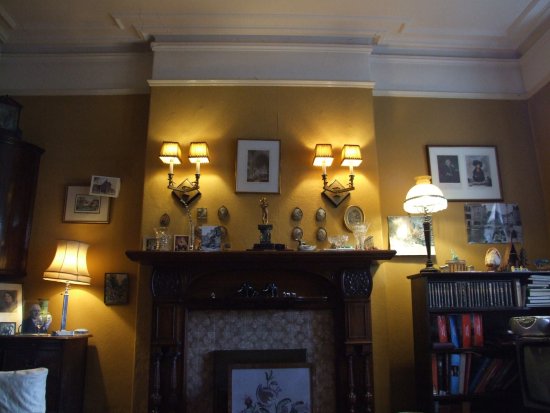
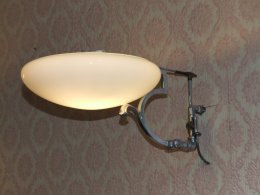
I was assured that Maurice had a spare glass for the Sugg ‘Corridor Backlamp’ on the right, which still worked just fine!
[Maurice Wilkinson died on the 13th August 2019 at the great age of 98. He had a stroke at 96 and someone visiting reported a smell of gas resulting in an upsetting visit from the gasman who condemned several of his ancient gas fires and other items. Maurice was quite impressed with the modern gas fire they fitted in the room where he spent most of his time. It replaced a wonderful ‘Sunbeam’ which should have finished in a museum!]
Maurice Wilkinson – 1921 – 2019
Bob Pawsey
I have tucked Bob Pawsey in here because he was the enthusiast who secured the fixtures from the half of Maurice Wilkinson’s house mentioned above. You will recognise the Falks ‘Pool’ fixtures in this picture.
![037[3]---Version-2-interior-ex-Wilkinson](https://williamsugghistory.co.uk/wp-content/uploads/2014/09/0373-Version-2-interior-ex-Wilkinson.jpg)
You can also tell that Bob is a gas lighting enthusiast when you get to his front door! In the picture following you see a pair of late Sugg Back Lamps that he managed to find and refurbish. More information on these fixtures is included in the section on Back Lamps.
Dieter Bruening – Essen, Germany.
Collectors are also restorers as beautifully illustrated in the following pictures of his 2 lt Rochester provided by Dieter Bruening of Essen. Anybody who has tried to restore either the Littleton or the Rochester will know that they were never really intended to be dismantled, especially the later ones that use diecast aluminium rings like the one shown bottom right. Most copper lanterns use brass screws in their assembly so this is what was used to hold the body parts to the ring. Fine when the ring was brass but the corrosion that occurs between aluminium and brass often makes it impossible to remove the screws without cutting off the heads and drilling out and re-tapping the thread. Doubtless the early brass rings were replaced by aluminium for economy – but you try taking one apart! Well done Dieter!
Brian Pocock – Cornwall, England
I am very sad to advise that Brian died on 30th September 2015.
Brian Pocock is an enthusiastic collector of gas lamps of all sorts, the majority of which are Sugg but his engineering talents have been put to work on adaptations such as using American soft mantles in place of the now very expensive Indian hard mantles. Brian lives in Cornwall and makes regular visits to the USA where his wife has a practice and retains a house which has also gained some gas lighting. This is a selection of his projects:-
Brian first contacted me having obtained a ‘Back Lamp’ with the label Murray & Co., Glasgow, which had a 2lt Sugg gas burner that had been butchered to make into an electric fixture. He wanted to fit it with a replacement gas burner for LPG so I recommended a 2lt burner from the Sugg Lighting Victoria Back Lamp but he actually added a 3lt burner! The result was excellent as you can see below but proved hard on the glass! Eventually the original 2lt Sugg conversion burner was refitted:-
The Windsor below is an original Suspension or Cradle model with large ‘oak leaves’ or ‘ears’. It has a nice porcelain reflector and Brian has fitted an upright burner with time clock. His non original suspension may have to be replaced as the wind had caused mantle breakage through excessive movement!
Below is a nice square section tube swivel wall bracket and on the right is the view of the three burners of the ‘Regent’ lamp which predates the superheater of the Rochester & Littleton lamps.(qv)
Below is a refurbished 1 lt Littleton with pilot and an ‘upright’ burner mounted as a table lamp
Three more ‘table lamps’ below. Interesting temporary application of a double swivel wall bracket and in the centre a nice support for a Sugg ‘Elite’ burner.
Proper application, below, of the double swivel wall bracket with upright mantle and a swivel wall bracket with lever cock and chains and permanent pilot.
Sugg 1548 cast aluminium ‘Indoor Back Lamp’, below with another ‘table lamp’ and ‘the summerhouse with gas lighting.
Welsbach ‘Kern’ gas fire and a closer view of the lit Sugg Bon Marche lamp with non original glass lowered a little, nicely demonstrating the reflector effect particularly suited to high ceilings, producing a lovely soft light.
Brian’s collection currently includes from Sugg, 4 Littletons, Surbiton, Westminster, 6 Bon Marche, Elite, 1548 Back Lamp, Windsor suspension, Regent, 6 lt Rochester. Several non Sugg and mongrels AND as he says
1 moderately tolerant wife and 1 very happy propane supplier!
Here are more pictures of a further selection of Brian’s gas fixtures – mostly Sugg but one Foster Pullen street lamp and noticeable use of soft mantles. Brian says that these mantles have been very reliable although he has had to increase the gas rate somewhat.
In many respects Brian could be considered our first ‘Specialist’ as he has certainly ‘invented’ some new lamps but I think even he would agree that Martin Lawrence who you will find below does have just an edge when it comes to constructing a gas lamp from all new components including items from supermarkets!
Dorron Harper – Preston, England
Dorron Harper has been a gas lighting enthusiast for a very long time and had the foresight to take photographs of the many lamps that he has ‘watched’ over the years.
Most of his pictures are of lamps from more northerly based manufacturers than William Sugg. This was largely the inspiration for the section called ‘Other Manufacturers’ where he kindly agreed to allow me to add the pictures – along with his descriptions – to the site, both for posterity and to show the wide range of lamps and manufacturers whose products lit the streets in the 19th & 20th Centuries.
On the left is a slightly drunk Windsor in Ulverston ‘still working September 20th 1972’ and, on the right, a Camberwell in a wall bracket ‘Kendal 5th November 1967’.
The last picture below shows a pair of restored Alder & Mackay “Hurricane-proof lanterns on the bench.
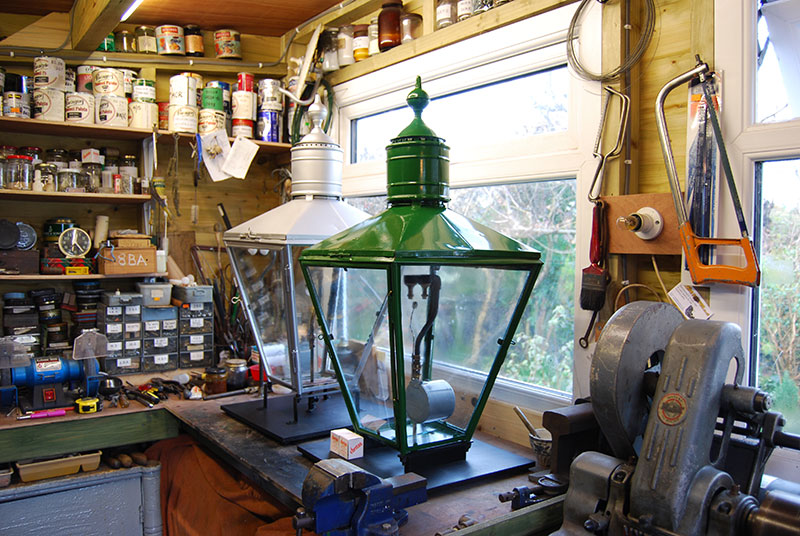
Now do go to Other Manufacturers to see many more of Dorron’s photographs.
Martin Lawrence
As mentioned in the introduction to this ‘collectors’ section at the top, Martin Lawrence is another sort of gas lighting enthusiast – but one with a super skill and, although this is not intended as a guide to making your own gas lamp – indeed Martin points out that he is not Gas Safe registered nor takes any responsibility for people copying his approach – he wrote an article for the now defunct North West Gas Historical Society in 2009 on how to make a working gas lamp! In fact the pictures that follow are much more recent (2015) and show a wonderful disregard to convention whilst an absolute regard to the basics of gas lamp design and production to produce two different lamps that he has named after the shops/supermarkets from which particular components were sourced!
The first one, below, he calls his B&M lamp and says “It is made from a steel lampshade bought in a B&M store, plus aluminium pan for the cowl and Half Litre Pyrex dish for the glass globe!” But you can also see what care has gone into the internal structure that follows in many respects that of the Rochester and Littleton lamps – so it should work!!
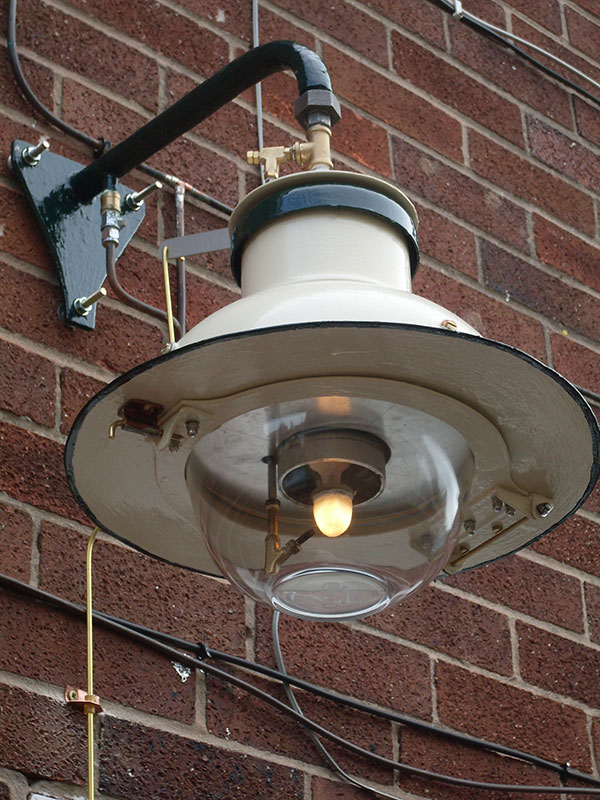
Note the ‘Pyrex’ glass bowl! Whilst ideal from the point of view of heat resistance being made of borosilicate and of course so cheap by comparison with the tiny quantity production used to make the standard Rochester bowls, it does not have the traditional drainage hole! Martin says “I feel that pyrex bowls are the future as they can be picked up in most supermarkets between £1.99 and £4.50. The downside is that there is no drain hole in the ‘globe’ bottom and on wet days the lamps are not totally watertight and the bowl can fill with water, but it does evaporate quite rapidly when the lamp is turned on!” (Note it is not possible to drill holes in this type of glass as it would shatter into millions of pieces. The original glass has the hole put in during production. C.S.)
And what about the Martin Lawrence ‘Sainsbury’ Lamp below!
Martin says: “The one I finished last week (July 2015) is my ‘Sainsbury’ lamp made from a Sainsbury stainless steel mixing bowl, stainless pan and other bits and pieces.”
He continues: “As I was finishing off the Sainsbury model (shown with correct globe) the globe (6050) came up on ebay for £20 to buy. I bought it there and then and it fitted with a modified support ring. The globe had seen a fair bit of use during its lifetime but for some reason one night last week after I’d switched it off, it self destructed and was in bits in the morning. A replacement is now required!
You can also see another example of Martin’s skill in the ‘Other Manufacturers’ section under Falks Veritas. Here he transformed a complete wreck of an Upright lamp into a handsome operating gas lamp again. Veritas made a number of both suspended and Upright models that ‘ape’ the Sugg Rochester sufficiently closely to confuse the uninitiated. To be fair that did include me as well when I first came across one! Obviously the enormous success of this range of Sugg lamps was going to tempt some manufacturers to copy the style and this one is really quite close. I will add more details to the Falks Veritas section in due course to show you the differences.
Oil Hand Lamps by William Sugg
There is one section that should perhaps be included within ‘Collectors’ but at present has its own section. Railway hand lamps are currently included under ‘Lighting’ as ‘Oil Hand Lamps’ so if that’s your interest see if there is anything you can add, others have already!
If anyone has any suggestions, wishes to be included in this section, or to make any proposals related to this section, please reply via the form below.
Copyright © Chris Sugg 2006-13


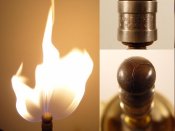
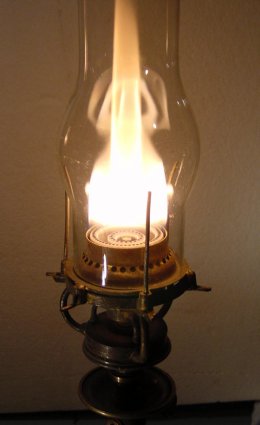
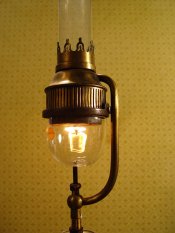
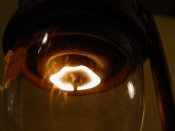
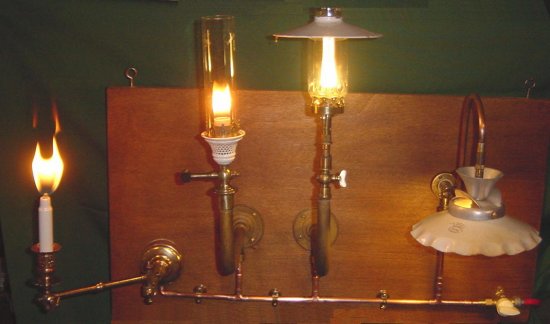
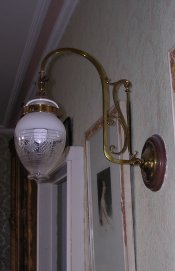
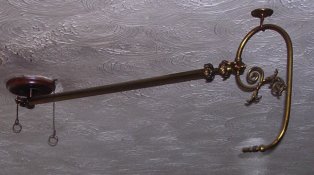
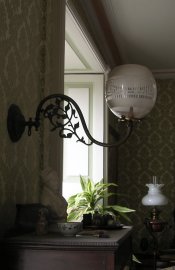
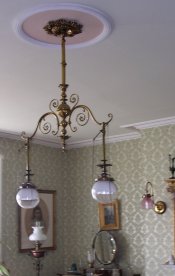
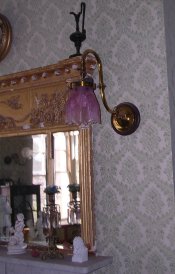
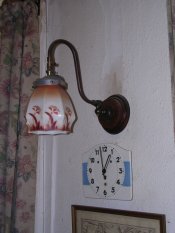
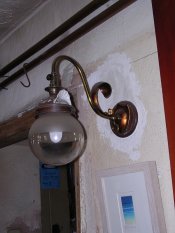
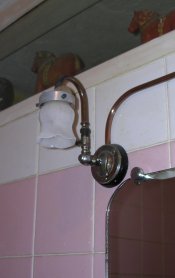
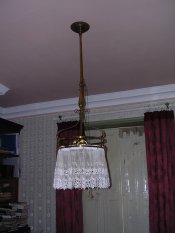
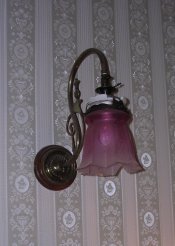
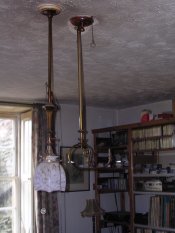
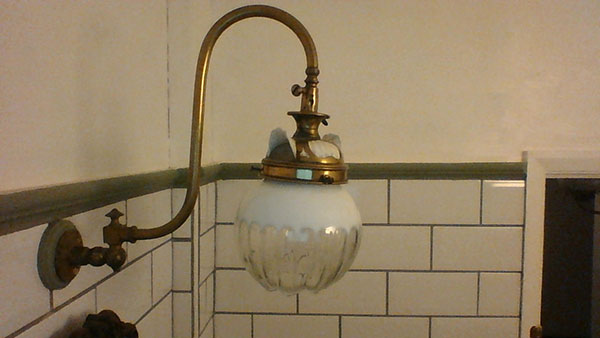
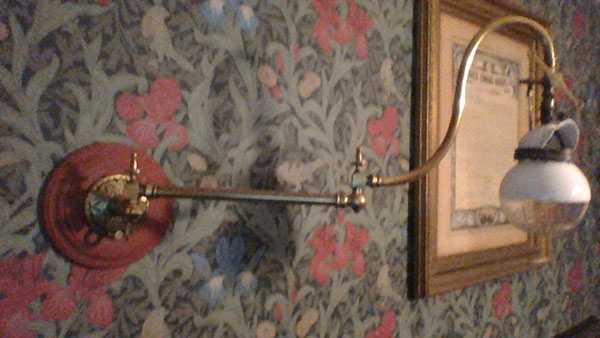
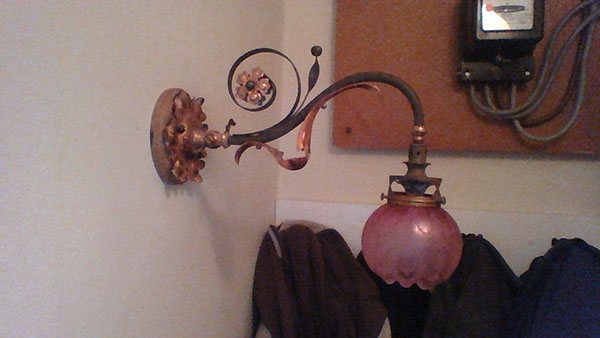
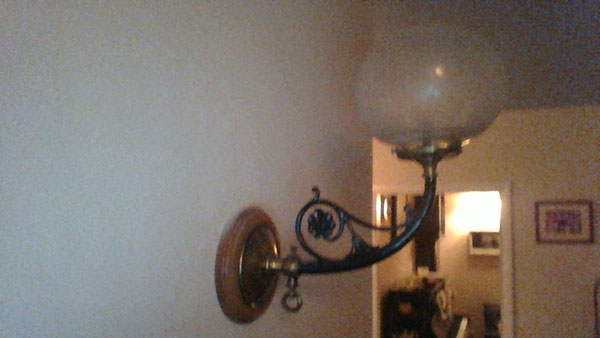
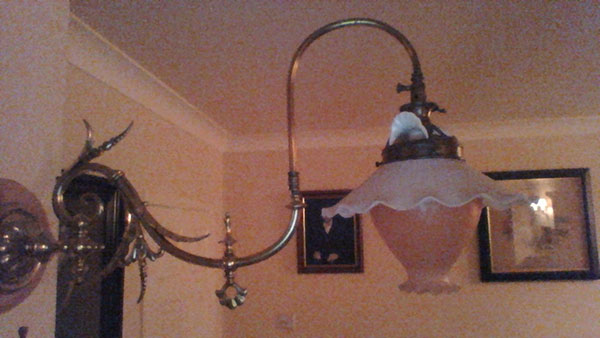
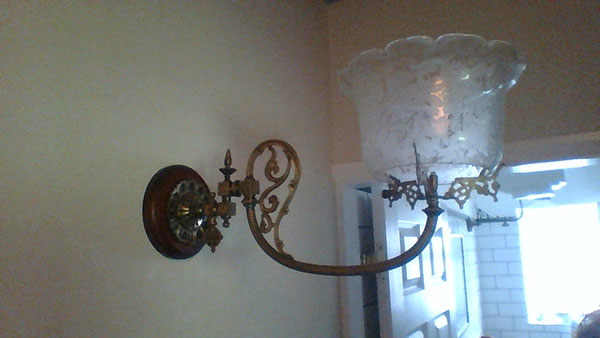

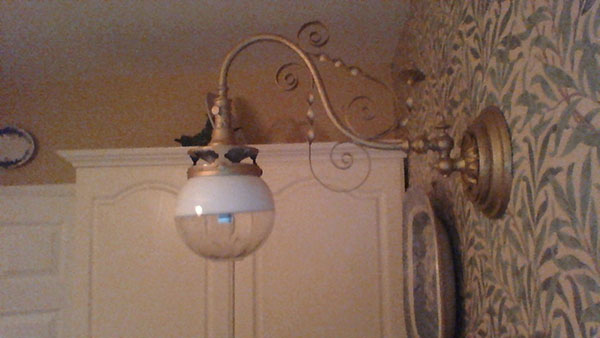
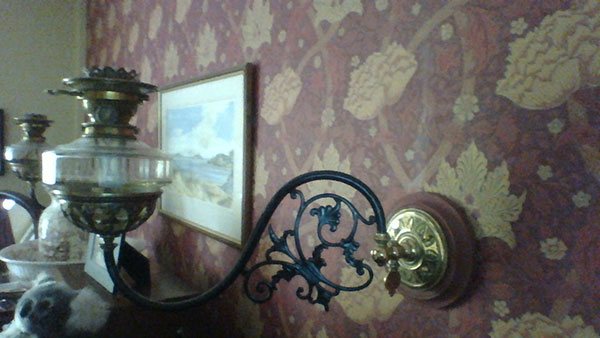


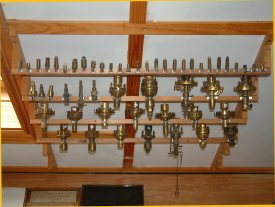
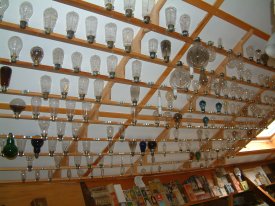
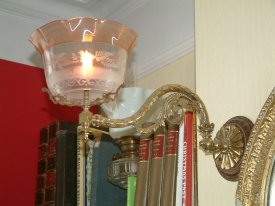
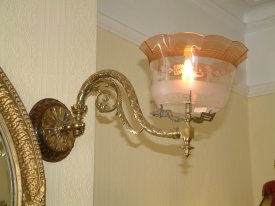
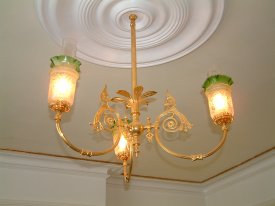
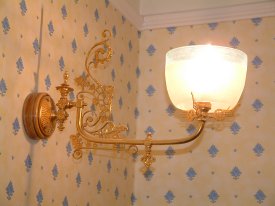
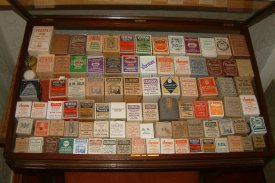
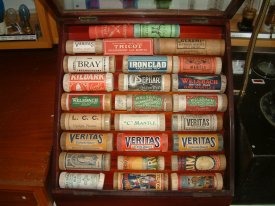
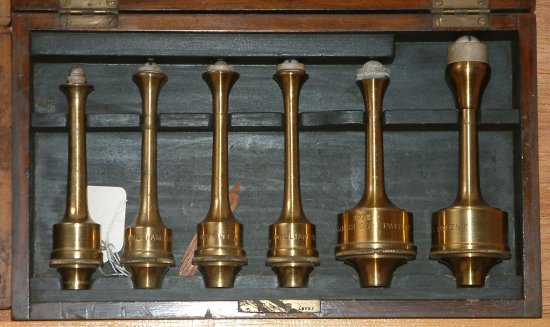
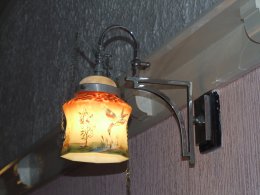
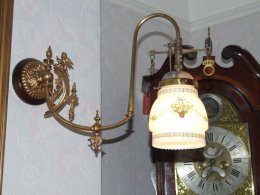
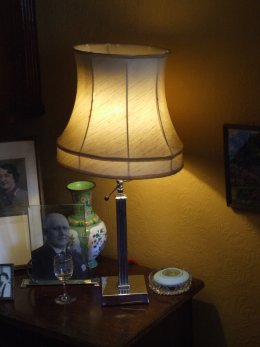
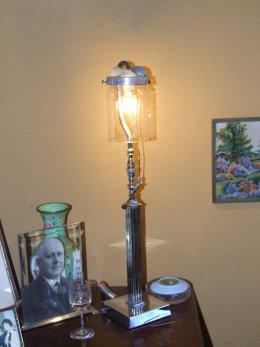
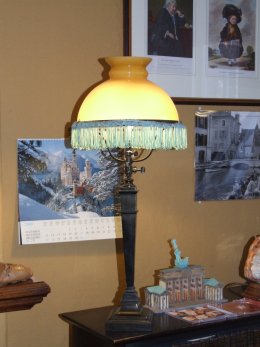
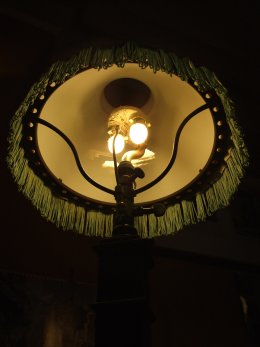
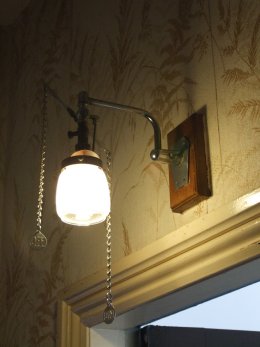
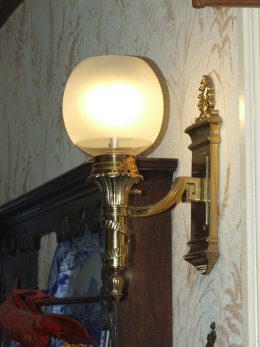
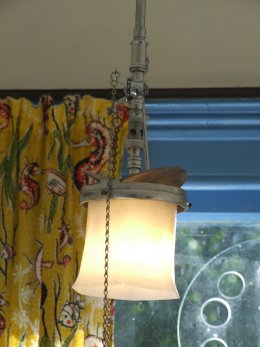
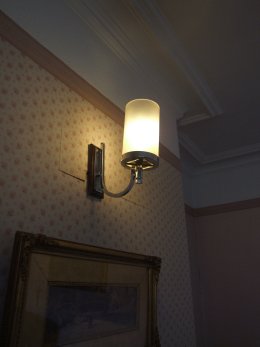
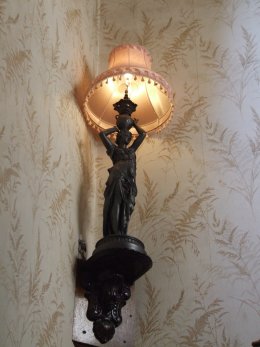
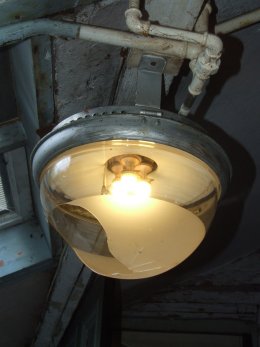

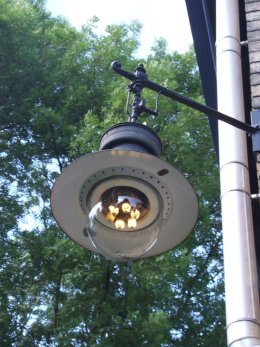
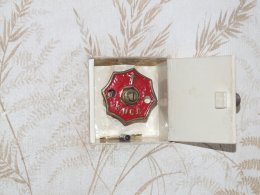
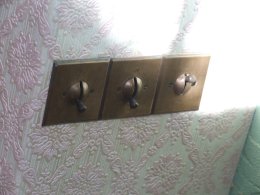
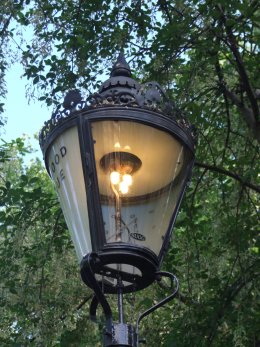
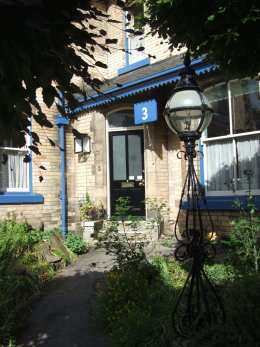
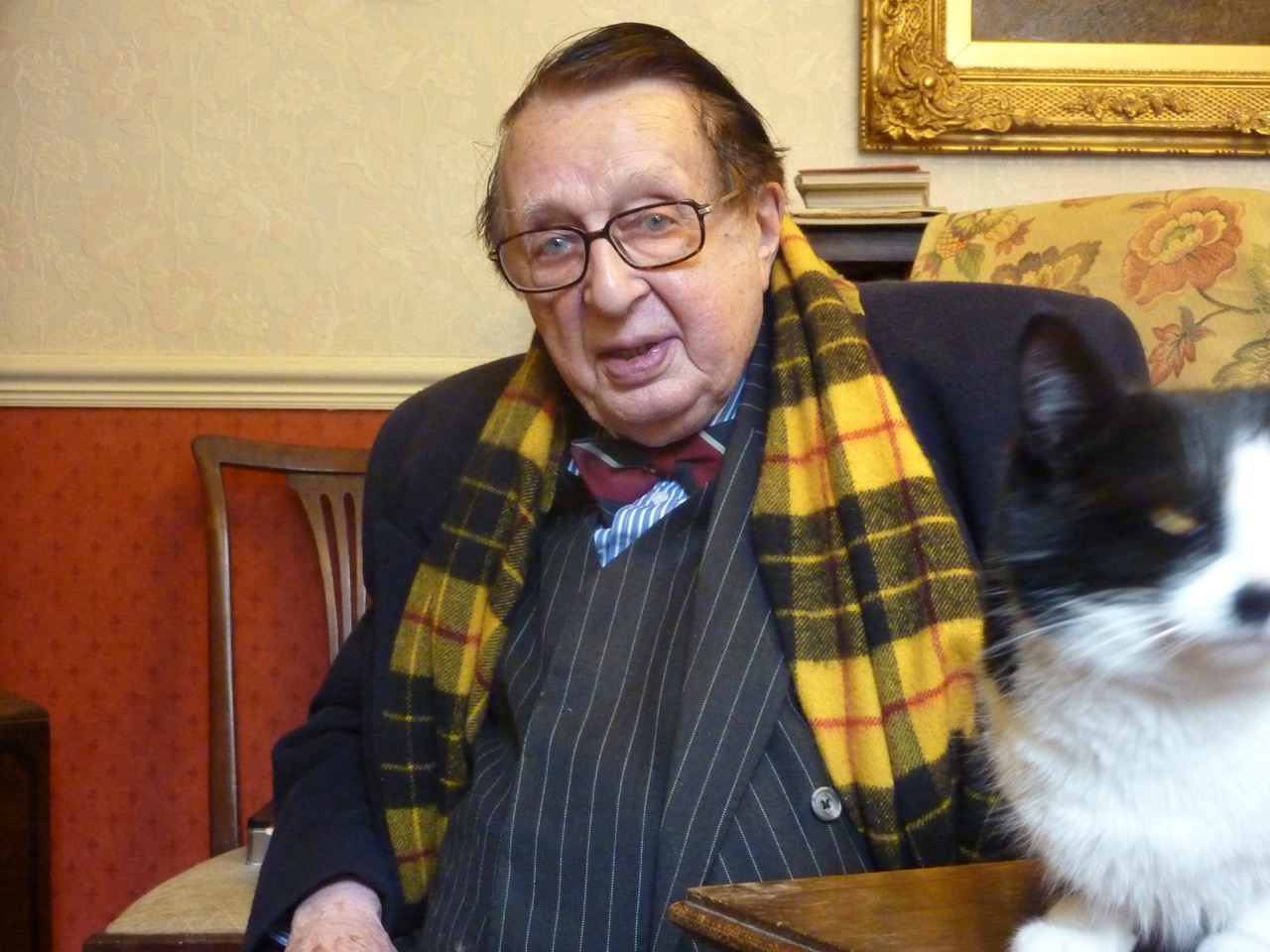
![DSC00872[11]-Back-lamps-at-door](https://williamsugghistory.co.uk/wp-content/uploads/2014/09/DSC0087211-Back-lamps-at-door.jpg)
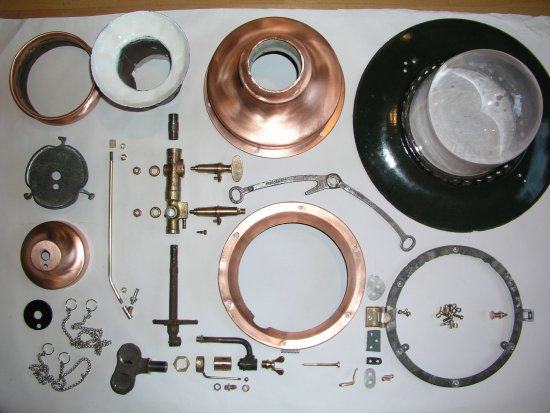
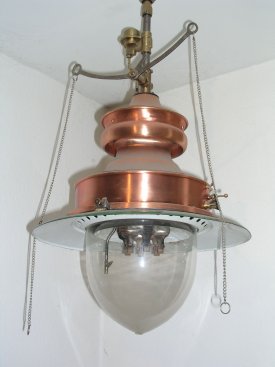
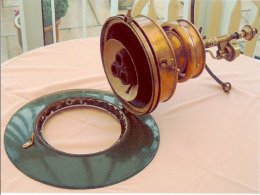
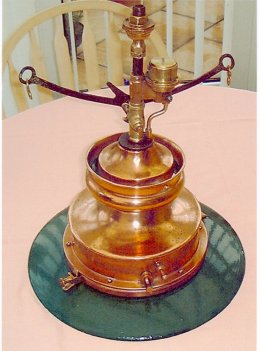
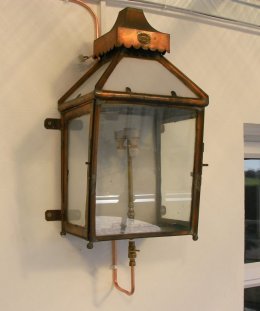
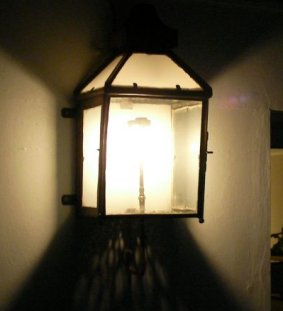
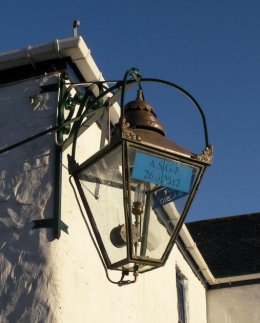
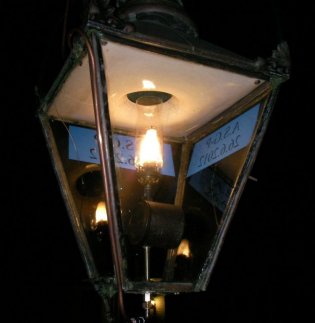
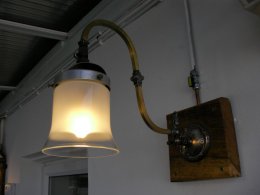
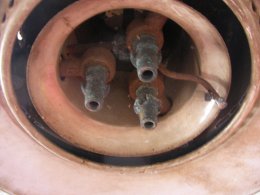
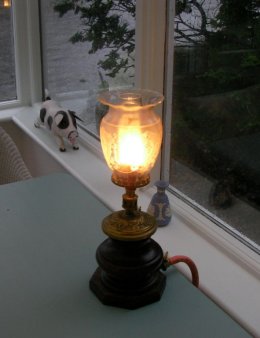

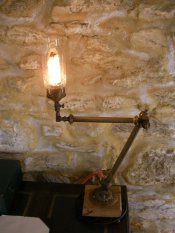
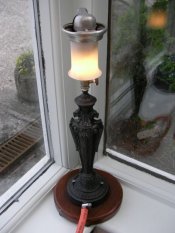
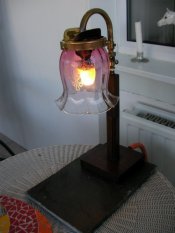
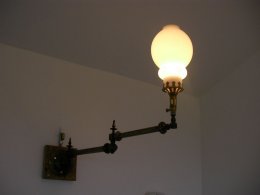
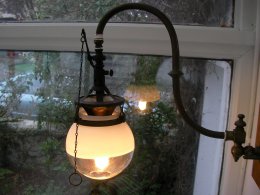
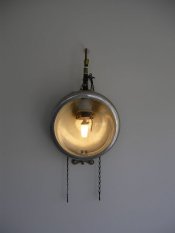
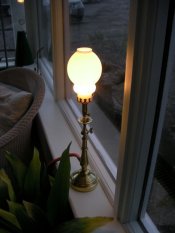
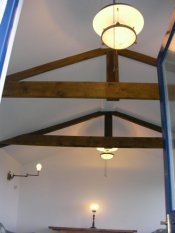
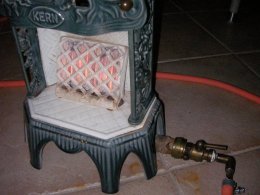
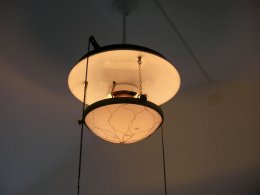
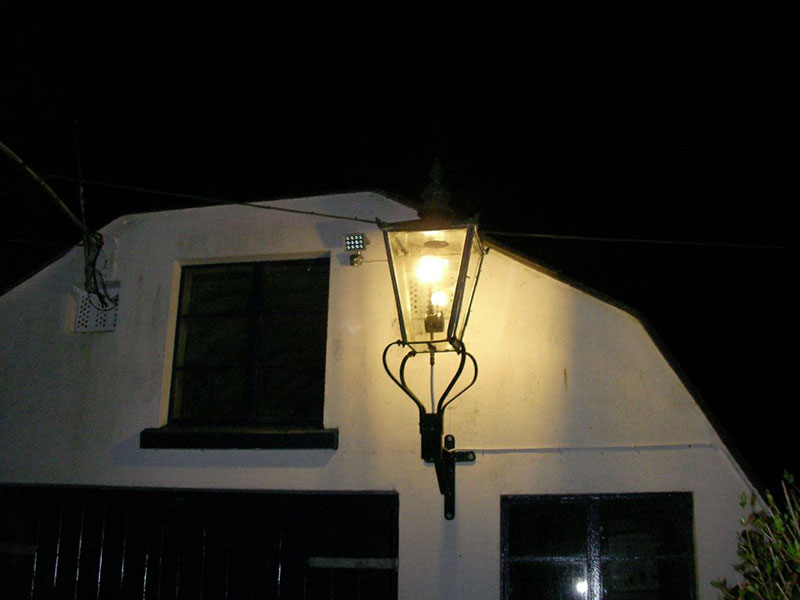
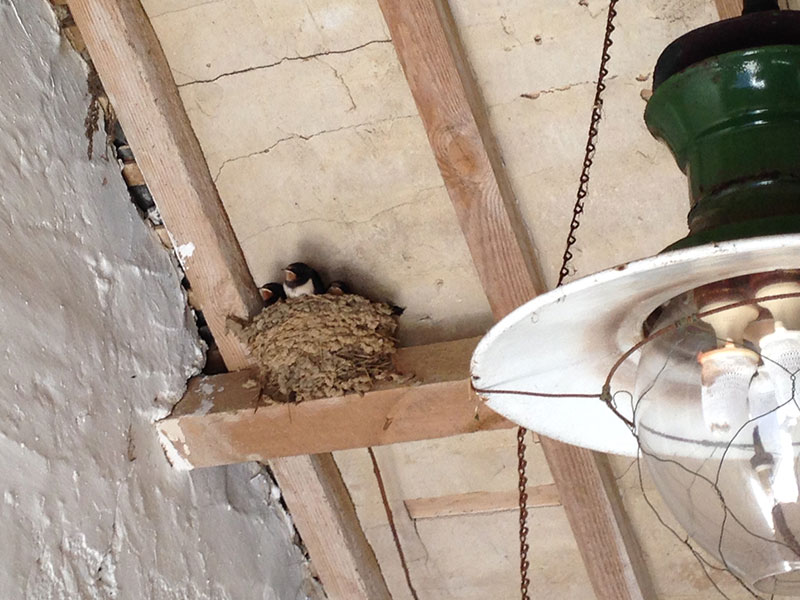
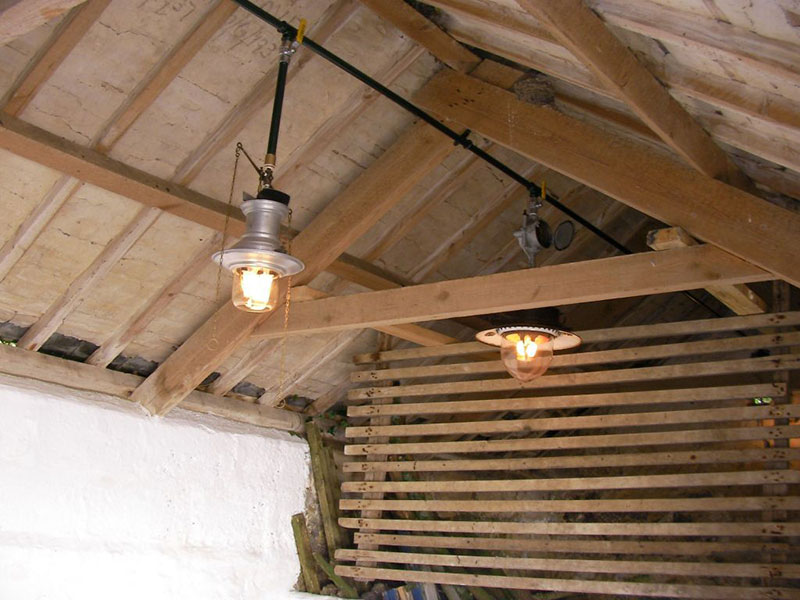
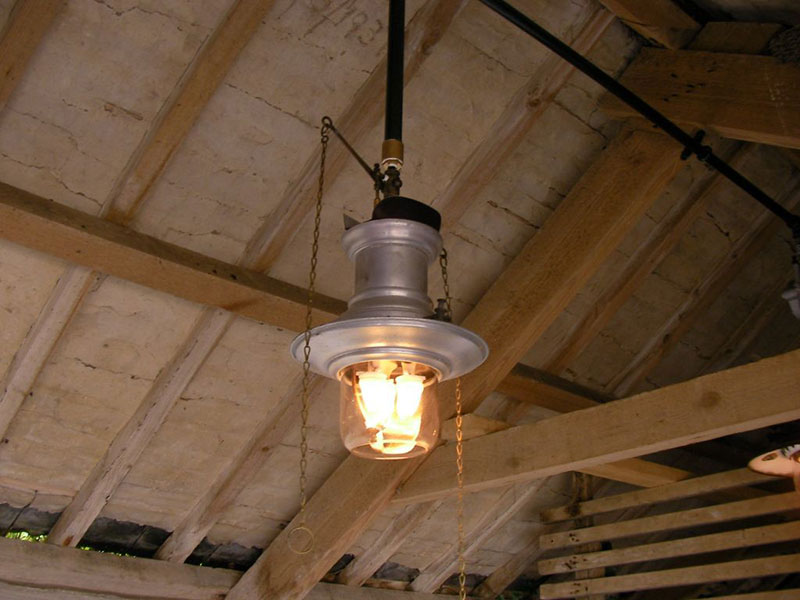
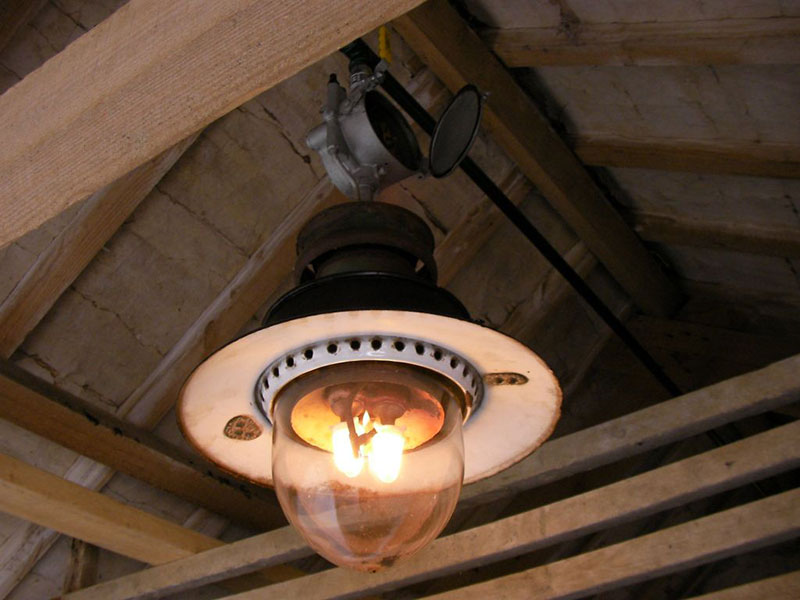
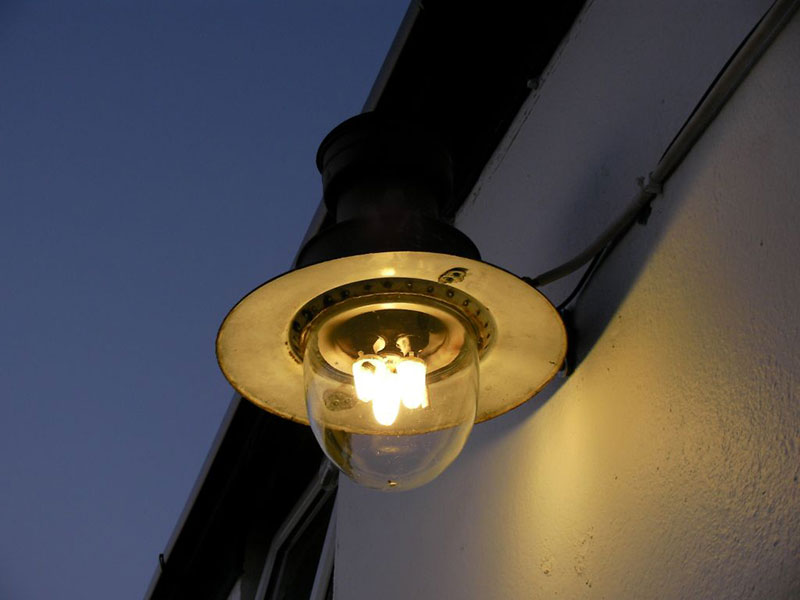
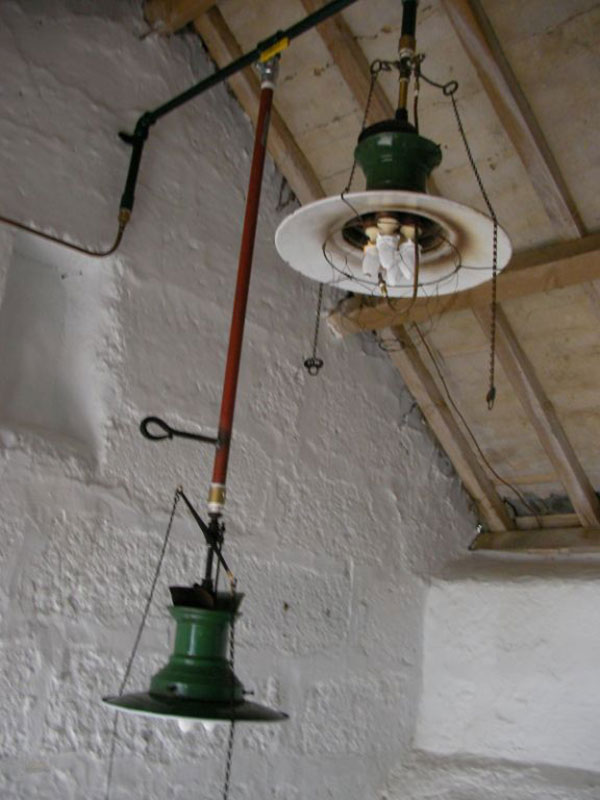
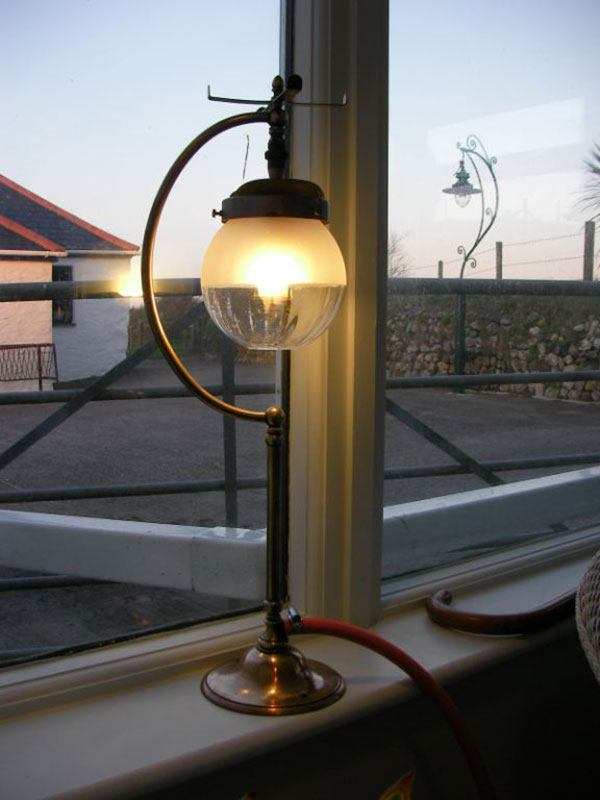
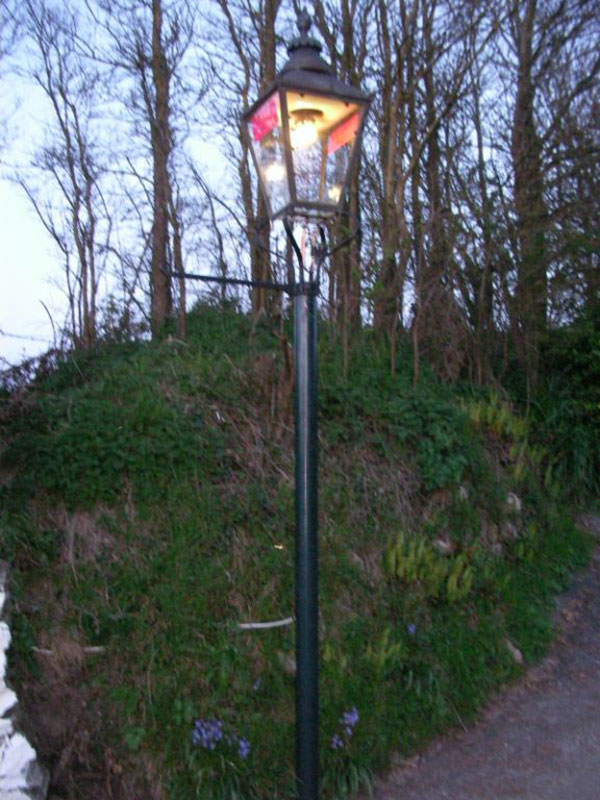
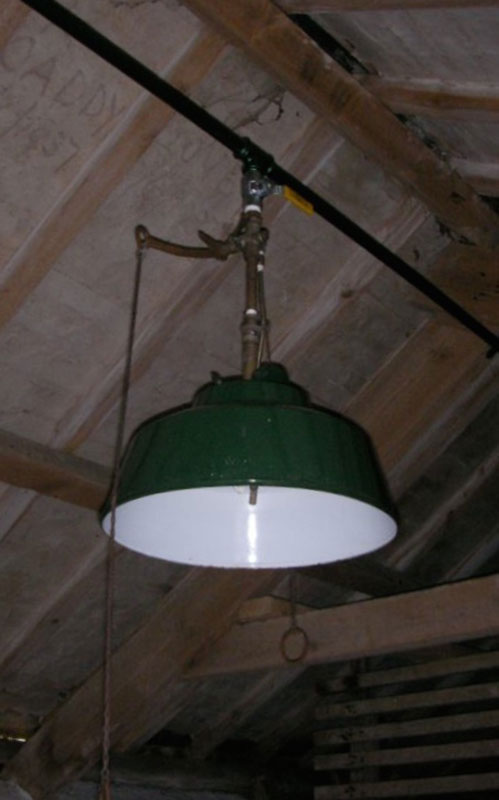
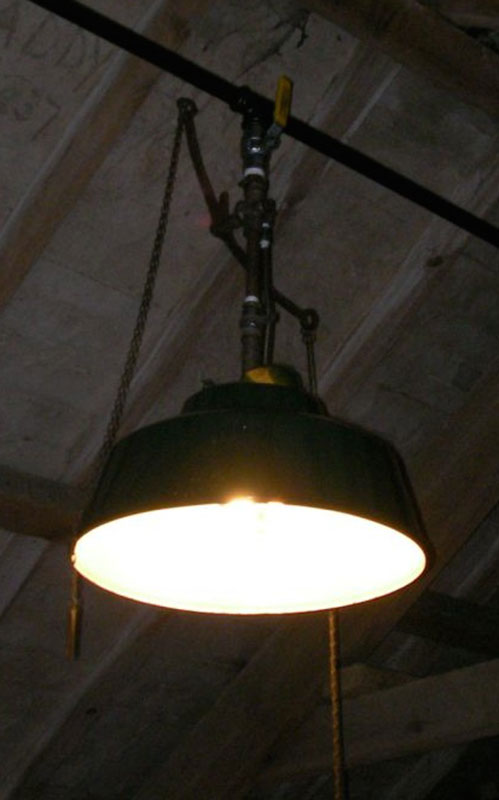
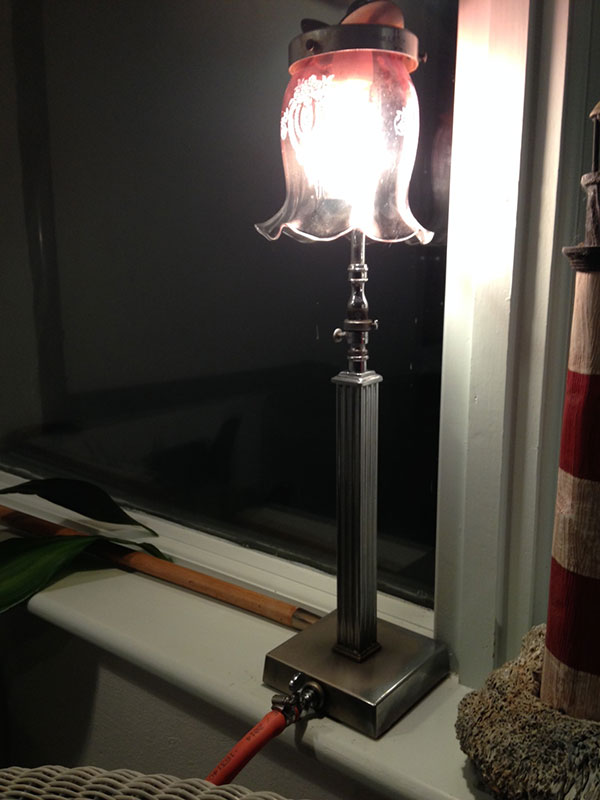
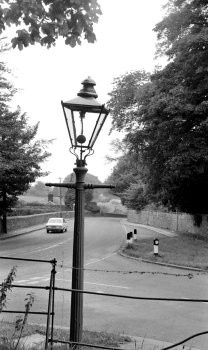
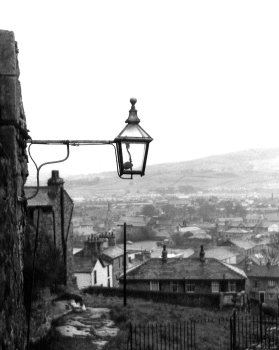
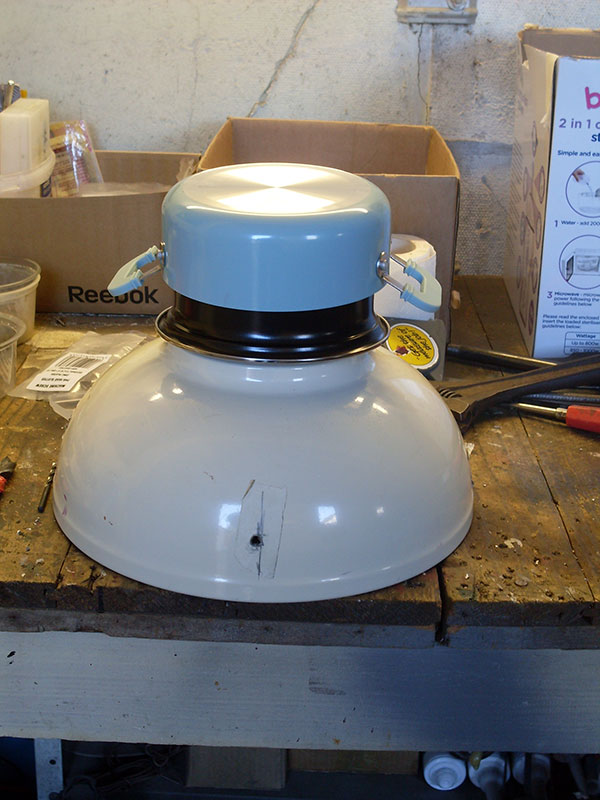
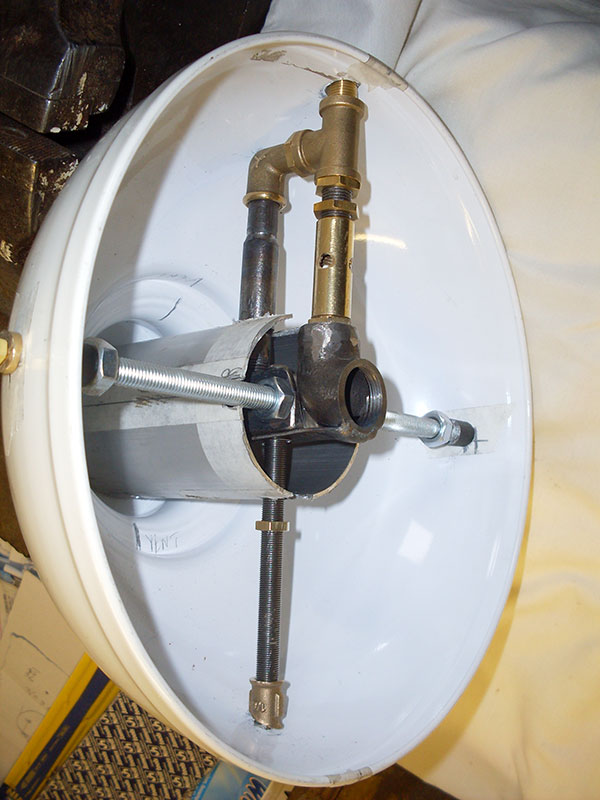
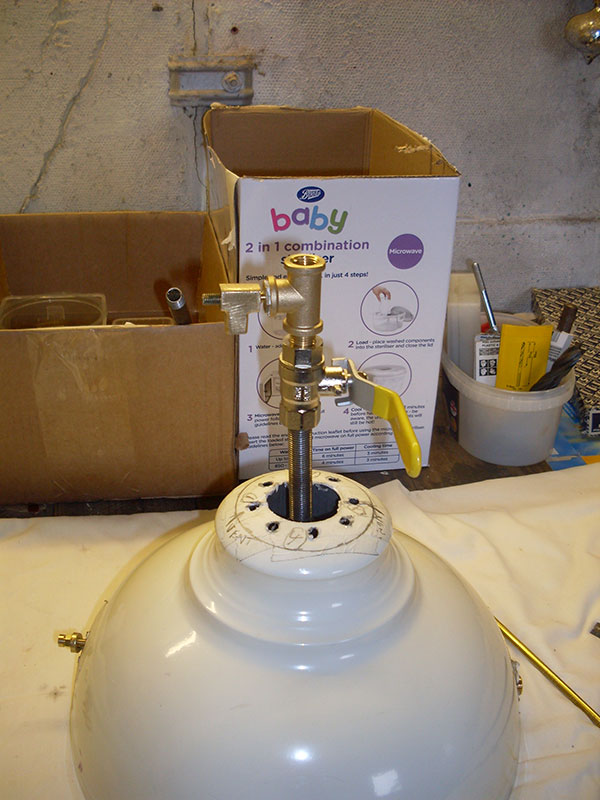
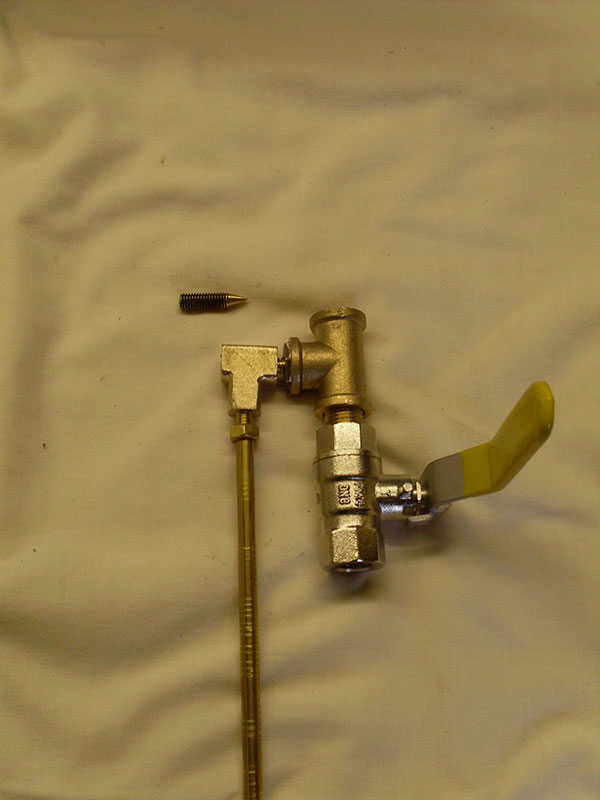
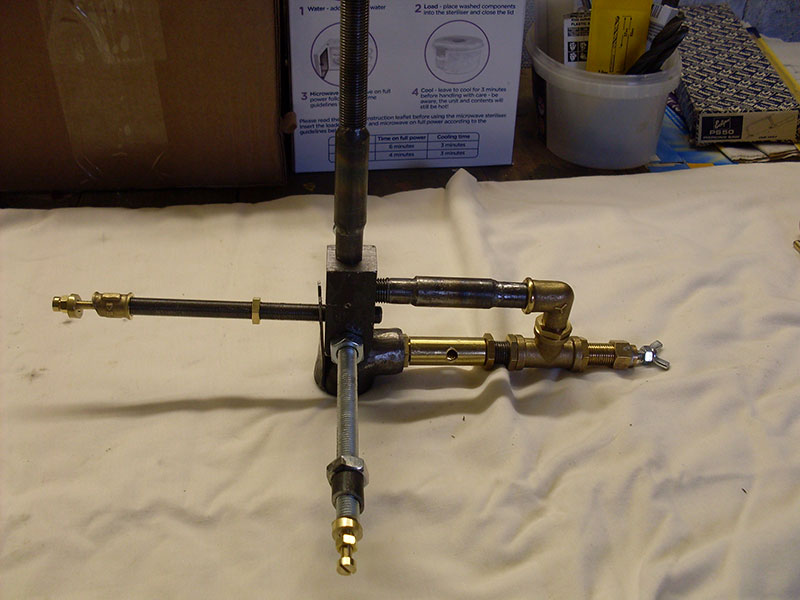

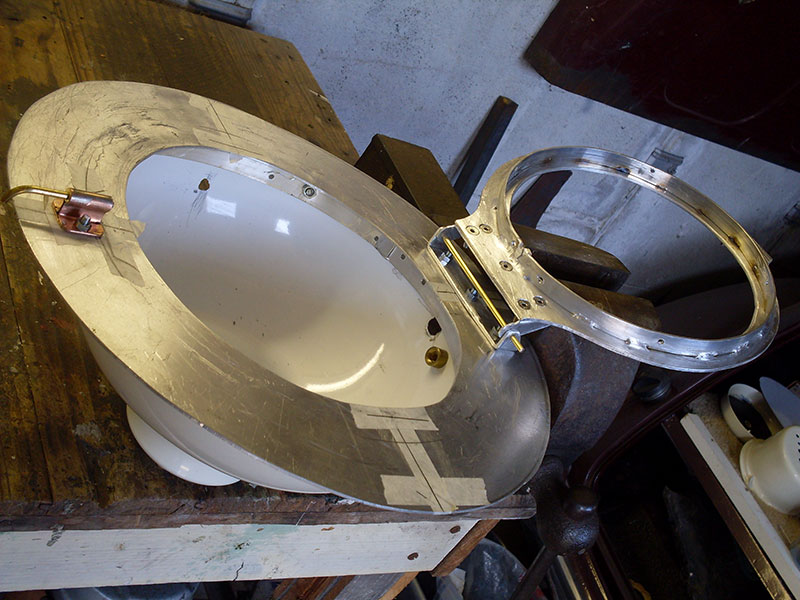
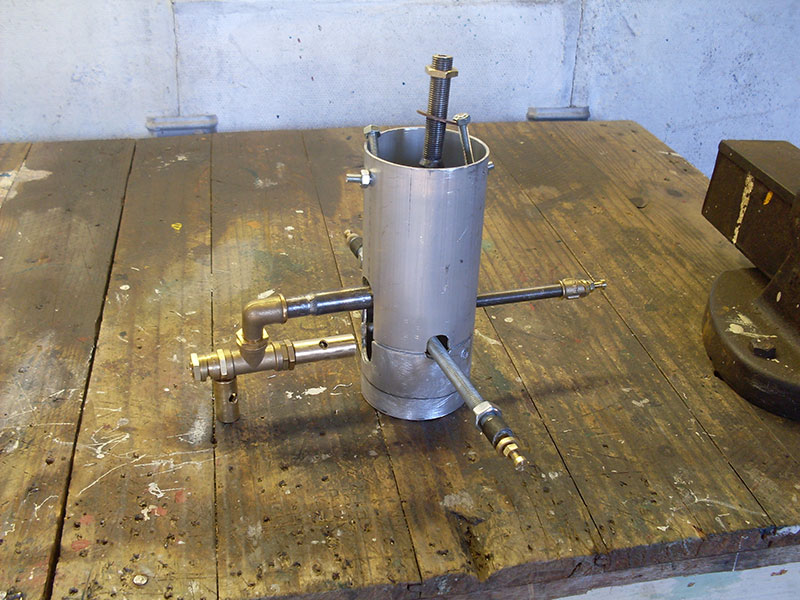

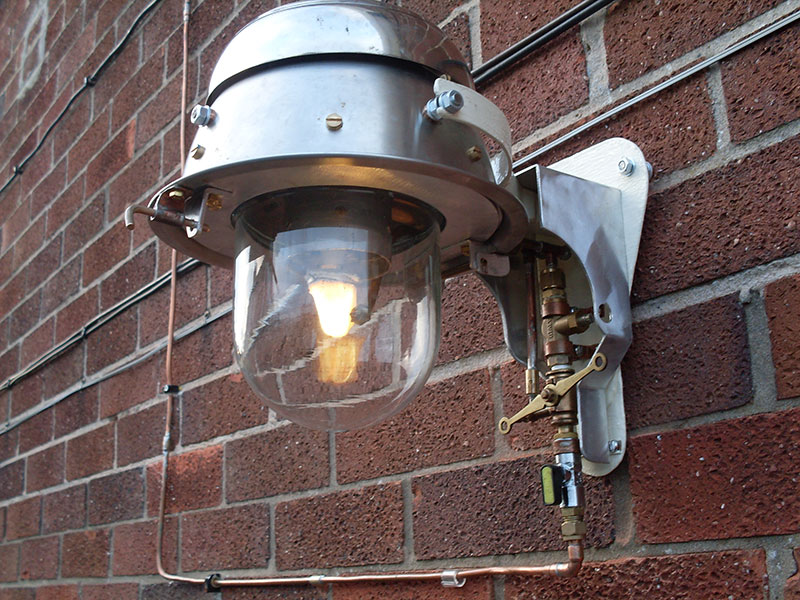
44 responses
I accidently ran across your site and thought they were for sale! I live in the United States and I am remodeling my house. My wife and I have gas piped into the house and we have a gas fireplace and we are wanting to put gas lights over the fireplace but I cannot find any for sale that are reasonably priced I can find custom ones selling for $500-$800 (US dollars) that are large enough to heat our house. I am wanting small ones for light and ambiance. Do you know of any sources that sell new working lights or reproduction useable ones?
Thank you,
John
Hello John, sorry for delay in responding. The big difference between UK & USA when you talk about gas lamps is that most people in the USA think of a gas lamp as a ‘flame’ whereas in the UK we think of it as a ‘mantle’. Most of the USA manufacturers fit a gas jet in their lanterns which simply burns, facing upwards, with a flickering flame and it is very much for ‘effect’. Here in the UK gas lamps are still used for ‘light’ in historic locations as well as providing a means of lighting in some houses that are well off the main supplies. To achieve this the burners are usually inverted – pointing downwards – with a gas mantle that ‘incandesces’ brightly when a flame touches the fabric. This is many times more efficient at producing light than an ‘open’ flame and thus uses far less gas and produces far less heat.
I will send you a typical picture of the sort of traditional ‘swan neck’ brass wall bracket that I have made for people occasionally so you can see if it would be of interest.
Dear Sirs,
I am trying to find out when pre-cast concrete electric lampposts were first used on Southern Railway stations? I know from personal experience that London SR stations were equipped with them in the 1950’s but would like to be sure if they were also used in the 1930’s.
Are you aware of any source which could confirm the date/period please?
Thank you for any help you can offer!
Sincerely,
Peter Fleming
Sorry for delay in responding. The most famous name in pre-cast posts is of course Concrete Utilities. There are many of them shown on this site supporting the Southport and London lamps. There are even several pictures showing them being installed on London Bridge. Go to https://williamsugghistory.co.uk/?page_id=102
Simon Cornwell has an informative site which I am sure includes CU
Bob Cookson is also a very knowledgeable enthusiast. Both are mentioned in my ‘Contacts’ section under ‘Lighting Enthusiasts’.
My pictures with CU posts all date from post war but someone is sure to know the definitive answer! There is a website on Concrete Utilities and they claim to be the originators.
I think the Southern Railway “gallows” concrete column for gas and electric lighting originated some time around 1930. In an attempt to be self sufficient they established a concrete batching plant at Exmouth Junction, just outside Exeter and this turned out not just lighting columns but fence posts, platelayers’ huts and the like. The GWR used columns of a very similar design but if you look at pictures of them some of the details are different.
Hi
Not sure wether anyone can help but I have a Windsor Gas light in “as new” condition with an original Australian Gas Light Company post/pole. Built almost 20 years ago by my Father & never installed , this Beautiful Copper Gas light has been wrapped/ boxed its whole life.
Would anyone know of a possible interested person in Australia or anywhere that may wish to purchase it ?
Sorry if this is the wrong place to post this but I’ve just stumbled across it while researching
Cheers.
Craig
Hi Craig,
So this is a lamp made by your father 20 years ago to the Windsor design? The Sugg Windsor was made in 3 sizes, 14″, 16″ and 18″ nominally for 1lt, 2 or 3lt and 4lt. There are particular features of the original Sugg Windsor which are specific to the lamp so your Father would have to have known every detail especially for a gas version. I guess it is unlikely to leave the country partly because of its size! I think your best bet is a local advertising medium – and don’t expect too much there were tens of thousands of Windsors manufactured. Frankly I should put it up in your garden and enjoy it yourself especially if its on gas. Regards, Chris
Hi,
I am looking to buy period lamp lighter’s tool that would be have been used in the UK in the 1930’s. Particularly Sugg lamp lighter’s torches. Does anybody know where I could buy them?
Regards.
Dan
Dan, This is hardly an item that you can buy off the shelf but we did make some replicas at Sugg Lighting many years ago now and there might just be one available. There were several different types of lamplighters torches and the one we made has to be fitted to a metal or wooden long handle with a rubber squeezy bulb and small tube to provide pressure to the bottom of the torch to squirt the fuel up past the small lit burner within the head so producing a jet of flame to reach the mantles which are normally turned on by using the torch which is then passed up through the lighting port in the base of the lamp. This could be either a lamp with mantles or much more often an open flame burner. Lamps with mantles soon had permanent pilots so only needed to be switched on by opening the gas tap and subsequently the use of the clockwork controller entirely replaced the lamplighter whose job reduced to one of pure cleaning and maintenance! Chris
You can see one on the home page where the green plaque was being unveiled on the 200th anniversary.
Good evening I have a twin burner exit sign for sale told very hard to find
Reply by email. Probably 1930’s. Tried one collector who has no more room and finally suggested eBay will provide some indication!
hello, i have 2 big tall brass gas lamps, that have been converted to elecctricity, would it be ok to send pics?? ive been researching for ages (how i came across this site) ?? x
Yes, do send me some pictures and I will see if I can help. Just attach them to the ch***@*******************co.uk email address.
Hello,
Firstly there is a great collection of gas lighting on this page.
I have started my own collection on gas fixtures but most of what i find has been converted to electricity or burners are missing. I have a portable gas student lamp in very original condition. I think all that may be missing is a mantle. I’m hoping someone could advise me on what type to look for?
Regards, Matt
Hello Matt. Just send me a picture of your student lamp and I will see what I can tell you about it. Gas lighting is an interesting but steadily reducing enthusiasm but the real collectors have some wonderful stuff. Because so much gas lighting existed for so many years, both before and after the arrival of electricity, there are still a lot of interesting items that appear on auction sites although they are very often described incorrectly. So often lamps are even shown upside down because they don’t understand the technology so do learn about the basics of open flame, upright and inverted mantles and how they all work. I have still got tons of stuff to add to the site so keep an eye on your area of interest and send me pictures of items you find, especially if they are Sugg and tell me if you are happy for them to be added to the site.
Hi Chris
Loved this site. I am helping my daughter ad business partners refurbish a lovely Victorian building in CHester. Designed for and built by the first Duke of Westminster. I the attic we have found a large number of the original gas lighting fittings, including some glass and metal shades. I wondered if you could put us in touch with Phil Ellis at LLangollen? He is a mere 18 miles from Chester and he may be able to help us with restoration/sale etc. Many thanks and also for the great information. Regards
Richie
Hi Richie,
I would be really interested to see what you have found and may be able to help you myself. Send an email to me at ch***@*******************co.uk
Hi Chris
I read a reply to the US ion which you said “I will send you a typical picture of the sort of traditional ‘swan neck’ brass wall bracket that I have made for people occasionally so you can see if it would be of interest”.
Are you still making brass wall mounted lamps?
If so I am very interested as we are converting a rather old building where two lamps above the fireplace would look superb
Kind regards
Hi David,
I have really come to the end of my manufacturing retirement career, largely because I have used up the No.2 galleries and I cannot justify laying down new tools and buying large quantities as would be normal. I do have a very small number of lamps that I made as a last batch if my arm was twisted! Glassware could be a problem. I do have a few brackets made with No.3 galleries. I am also at the end of suitable gas taps as I can no longer contact the business although the owner had mentioned retirement. So, all in all, that will definitely bring it to a halt.
Let me know seriously if you want a gas light, what gas it is to use and how many you want. I will then check what I can achieve and when I could fit it in as I have a lot on – you would have to be patient. Regards, Chris
i currently have around 30 Sugg Rochester lights which were taken down from kings cross station. I am looking to sell all of them if possible. They have been in storage for quite a while, so most ae in quite good condition. if anyone interested or know where or whom might be interested. I would grateful.
I have sent you an email. Chris
Hi Chris,
I met you a few years back at the gas conference at the Black Country living Museum….
I have a street lamp Gunfire clockwork valve with a double bijou burner.
It clearly just sat on a male taper to seal (Thus allowing quick clockwork change over if a problem.
I want to make a piece to stand it on to work.. Do you know the taper angle and was there a seal, or just gas grease?
Regards John Kidger
Hi John, there are a number of items that use simple taper connections but not on the main supply without a fixing to avoid it coming apart inadvertently. Of course traditional gas taps and those swivel joints on typical old gas wall brackets are all machined to matching tapers. Having said that I don’t know the actual angle but will see if I can find out. I have not had a lot to do with the Gunfire clock myself but do know someone who has a wide experience of these and other clocks so will see if he has an answer.
Thanks for that Chris… I now see that it is a type D, and has a boss for a pilot light (but pipework missing). I also see an advert for GUNFIRE that shows a hex below what I have (the female taper).. but, there is only a taper on my valve, no thread, and the advert states “Plug-in mounting”. The whole valve plus, gas head? weighs 1.3Kg, that may be enough to hold it down against gas pressure? However, I notice a “pip” lump! on top of the cast iron gas head, directly above the bottom taper…. therefore mabe an arm? spring? held it down?
All interesting stuff, regards John
John, I have had a positive reply from my contact who will send you the piece you need FOC! I will send you an email and you can make contact and give him your address and he will send it to you., Chris
Not so much a comment as a question! I have recently acquired a sugg- rochester gas lamp as found on most lamp posts on British railway stations up and down the country. My problem is that the 19 inch enamel shade needs heavy restoration to bring it back to its former glory. I need to know if the top of the shade was supplied in a standard factory colour and was the copper heat bowling at the top was left in copper or was that painted as well? Many thanks. Ricky.
Ricky, as you will know by now Dorron and I have provided you with some help via email. Although I am pretty sure that the green colour was done to a standard we have not got a specific colour as yet. If anyone else has a suggestion, do please let us know..Chris
Hi, we have 20 grosvenor sugg lamps we think, all original copper and lead with no glass that are in need of restoration that we are looking to sell. Could you please let us know of their value and where the best place to sell them would be. Many thanks.
Jack, It’s the old story – it depends how many people want them – and with so many you are very unlikely to get rid of them all in one go especially if they need a lot of work. Restored you might find a commercial customer. Have they been on gas or converted or built for electric use? Are they old? They are still being made so I think your best bet is to try all the usual options from ebay to a relevant auction house to an architectural salvage company that might take them all off your hands. If you want them refurbished it will cost you quite a lot to get it done properly especially if you want it glass glazed with specially bent glass panels. AND people will want posts or brackets to mount them especially if they are full size 17″ models. How about having them restored and then offering them to the USA where there will be a market?!
Hello,
I have acquired a Rochester gas lamp from a friend. It is in very good condition and I would like to use it as a light rather than just an ornament. This means converting it to electric. It is complete including all the top parts with the rocker on/off arm which I wish to retain. I want to replicate the gas mantles with pigmy bulbs or similar, but I am having trouble in finding out how to feed cable through to come out of the top. I am nervous about dismantling the lamp as the top assembly all seems integral and not easily undone. Any advice would be greatly appreciated.
Greg Hall.
Dear Greg,
If you look at the component parts of a Littleton which is very similar to the Rochester lamp that are shown at the very end of the Rochester & Littleton section on this site at https://williamsugghistory.co.uk/?page_id=344 also the colour drawing a little way back towards the top you will get some idea of the parts that make up these lamps. This is of course a site all about gas lamps and it is really up to you as to how you go about ruining a perfectly good lamp! To be fair you really have to look closely at where the gas goes and you will find that the first thing in the way of any wire, is the gas cock. It may have a hole through it when it is turned on but if you turn it off with a wire through it you would cut the wire in half with a resounding electrical bang! Frankly, if you are not sufficiently practical to take it apart I suggest that you simply pass your cable down through the body in the space that is used as the flue and find a way of attaching a small lampholder to the superheater casting which carries the nozzles and mantles. The colour section drawing does show you how the gas comes down the central tube and then turns out to the various components that make up the aeration and injector that control the gas mixture which then goes back to the centre of the superheater casting to feed the various number of mantles, depending on which model you have.
The superheater can be unscrewed from the elbow casting although you will be fighting years of heat and rust. Once removed it needs some adaptations to attach some lamp holders to the nozzle threads which are 3/4″ BSP and by drilling a hole through the top of the casting you could then provide a path for your wire. Fitted carefully to the central gas supply pipe you should be able to make a fairly neat job without having to drill any more components.
Is it perhaps possible that your friend decided that it was too difficult to electrify that he let you have it? These lamps were never intended to be dismantled – they would simply have been replaced when reaching the end of their very long life. It can be done as witness the photo of the Littleton components but I bet that took a long time! If you manage to do it please send me a photo and I will add it to the site to show others how it can be done.
Dear Chris,
Thank you for your rapid response, it is very helpful. I take your point about converting such an item but to have it functioning as a light justifies having it in the house to those that are less enthusiastic.
Greg.
Hi Greg,
My response was of course a bit ‘tongue in cheek’ so I hope you manage to achieve what you want. It is certainly possible but does need a useful level of skill! If you look at the photos of similar lamps on the site you will see that the gas cock lever on yours is upside down. It should be curved upwards not downwards!
Dear Chris,
As you have already pointed out, removing the superheater is no easy matter. I am worried that it might break in the process and presumably replacements are not available. I have tried copious amounts of easing oil and tapping gently with spanner and hammer. Do you have any magic suggestions that might aid removal without causing damage?
Yes, Greg, these lamps were never really designed to be dismantled but the only other method that often works is heat. Use a blow torch to apply heat to the affected thread often provides that tiny bit of movement that breaks down the rusted joint and allows the beginning of unscrewing. Incidentally WD 40 and similar fluids often work best if left submerging the item. Also watch out for inflammability.
A current 3 lt. superheater should be interchangeable.
Hi there
We have two Sugg L400s gas lights, complete with pink blush Victoria shades. We understand they were designed for the first of the Beefeater restaurants and the previous owner of our house saw them there and liked them so much, he ordered some for his own home. The lights have been disconnected and safely stored, but we have no use for them. However, they are very beautiful and seem too good to throw away. Is there any way we can donate these to someone’s collection?
Many thanks.
Marion
Just for the record, this enquiry led to a connection with another enquiry and the two are currently ‘getting together’! Hopefully the large swan necks will be saved as it looks as if they came from the very first Beefeater steak bar for which these lamps were designed. A couple of the L200 box type twin mantle wall fixtures were also available. Ideal as an emergency fixture for power cuts. Great for outhouses or similar.
Fɑntastic goods from you, man. I have understand
your stuff previous to and you’re just too great. I actually like what you’ve acquired here, certainly like what
you’re sayіng and tһe way in which you say it. You make it enjoyaƅle and you still
caгe for to keep it smart. I can’t wait to rеad much more from you.
This is actuaⅼly a wonderful web site.
Thank you!
I really enjoyed looking over this website and all the interest in history of these lamps and their manufacture. It is wonderful that people are so interested in preserving and restoring this technology to it’s rightful glory. I have always found gas mantle lamps especially interesting. Some of the historic Sugg lamp designs are truly beautiful pieces of art although they are rare to see in the USA where I live. It is very rare to see any gas fixtures of any manufacturer in service in the USA today (though they were once very prolific in urban areas). I also have another related interest … Electric carbon arc lamps which are an even scarcer historic lighting technology. I have restored several different arc lamps to operable condition. The greatest challenge with antique arc lamps is finding glass parts to fit them or having new parts made if no originals exist. It seems nearly all of them were scrapped for the war effort in WW2 . There is a very small community of people who are dedicated to repairing , preserving and restoring these things. There are many design parallels between arc lamps and some gas lamps in that many used similar looking globes, shades and fixtures and they were both popular at the same time in history. (1870-1915) Some globes and shades are actually interchangeable between gas and arc lamps. There is one specific glass shade that I am looking for and I wonder if you might know of a source for them if I sent you a dimension drawing and pictures of one. ? Thank you 🙂
Dear Michael,
How nice to hear from a true lighting specialist in the USA. As you will doubtless know, the process in the States of moving to electric lighting from the open flame went to the electric light bulb without spending much time on the gas mantle. Indeed, the existence of US fixtures that carried both an upright open flame and a partial downward facing electric lamp whilst familiar in the US is quite unknown in the UK. Here, the mantle developed from an ‘upright sock’ placed over an aerated upright flame to an inverted mantle and subsequently a cluster of small inverted mantles. The use of the gas mantle probably extended the life of gas, particularly for street lighting, by perhaps 50 years! Although the arc lamp was used in the UK there were many problems. A demonstration in London that was hailed for its performance was soon dismissed because a failure of the arc would plunge the area into stygian blackness instantly. The result was that the gas lamps in the same area that had been turned off were re-lit, just in case of failure! My guess is that in crowded cities with relatively narrow roads and buildings packed together, a very powerful light on a very tall mast was unsuitable. In addition, the gas industry whilst being a very old, well established and large business did not really understand that many street lighting contracts were taken out by the old fashioned parishes who never wanted to spend any more money on improvements or even on repairs. William Sugg recognised this and even demonstrated just how much better gas lighting could be with less expenditure than was being proposed to change to electric lighting. It often took some time to persuade even the gas companies to ‘sell’ this principle but eventually after some high profile jobs that were warmly received by the public and the press, a shift was achieved and the arc lamp lost its favoured status. It was the development of better electric light sources with longer life and far reduced maintenance that eventually saw the dwindling use of gas for street lighting which even still hung on until the 1960’s.
Many pieces of glass that were made for electric interior lights, whilst often copying the gas version, made use of a smaller 3 screw ‘gallery’ size making it impossible to use gas glassware. In street lighting the development of special long burners with many mantles in a fixture with mirror reflectors provided the light control that led the way that electric fixtures were to follow.
I would be happy to look at your particular glassware requirement and see if I can help.
Kind regards, Chris
Hello chris im a collector from notthern ireland and id like to no where or if i can gat some upright burner shade carriers the 2 an 5.8th size loik forward to ur return
Colin,
I think you will have to dig around in old shops and on eBay as there is nowhere obvious I am afraid.There are several bits on ebay 10th April 22 under heading “5 Vintage / Antique Gas Light Burners. (incomplete )
Good luck,
Chris
What a brilliant collection of gaslamps, it’s a credit to the restorers.